Pharaoh Ahmose I Expelled The Hyksos Invaders And Changed History Of Ancient Egypt
Ellen Lloyd - AncientPages.com - Ahmose I was carrying a heavy burden on his shoulders when he ascended the throne to rule as the pharaoh of Egypt. He was still a young child, not more than 10 years, but much was expected of him. Death had followed in his family’s footsteps, and he was surrounded by enemies.
How could he accomplish something extraordinary and change the history of ancient Egypt?
As the first king of the Eighteen Dynasty and founder of the New Kingdom, Pharaoh Ahmose I ruled c. 1569 – 1545 B.C. He is today not as not well-known as famous pharaohs such as for example Ramses II, Akhenaten, or Hatshepsut but his significance as ruler of ancient Egypt cannot be forgotten. Pharaoh Ahmose I changed the history of ancient Egypt and managed to accomplish what his father has started before being brutally killed.
Known as Nebpehtvre from his throne which means “The Lord of Strength is Ra,” Ahmose I was the son of Seqenenre Tao and the powerful queen Ahhotep. He had the misfortune to live during a turbulent period when his country had been invaded by the Hyksos people.
The origin of the Hyksos people is still a matter of debate. “Many researchers refer to the Hyksos as West Asian people, but who these people were is not exactly known.
They were officially known as “Foreign Rulers ('Heka Khawaset'). Their historical name “Hyksos” is of Greek origin.” 1
Sometime around 1650 B.C. these foreign warriors invaded and took over much of Lower Egypt establishing a new capital at Avaris.
The Hyksos occupation was later described as a highly traumatic event for the Egyptian people, but scholars often remark it is not clear whether this was actually the view of contemporary Egyptians who lived under their control.
Looking through the eyes of Pharaoh Ahmose I and his family one can say with certainty the Hyksos invasion was a very dramatic event. When scientists examined the mummified body of Ahmose’s father Seqenenre Tao they discovered the pharaoh suffered a violent death. Pharaoh Seqenenre Taa II died close to the battlefield and was ceremoniously executed by several attackers using Hyksos weapons.
Kamose, the stepbrother of Ahmose I was also killed by the Hyksos invaders. After his death, Ahmose succeded to the throne. Being only about 10 years at the time, he was still much too young to rule and his mother Ahhotep served as regent until he was about sixteen.
Now, he started to plot his revenge and his goal was to complete what his father never succeed with, namely the expulsion of the Hyksos invaders out of Egypt.
How Pharaoh Ahmose I Expelled The Hyksos Invaders
He received support from Queen Ahmose Nefertari, who was his wife as well as sister. Pharaoh Ahmose I did not waste any time. He focused all his energy and thoughts on preparing a plan on how to deal with the foreign invaders in the quickest and most efficient way.
Left: A fragmentary statue of Ahmose I, Metropolitan Museum of Art. Credit: Publis Domain - Right: Dagger of Ahmose I, Luxor Museum. Credit: Heidi Kontkanen CC BY-SA 2.0
Pharaoh Ahmose I waited patiently until a good opportunity presented itself. When he learned the Hyksos king was requesting backup against the Thebans, he understood this was a perfect moment to strike against his enemies. The Hyksos were weak and vulnerable, and the pharaoh could use the element of surprise.
“The details of this campaign are recorded in the biographical texts inscribed in the tombs of two officers who fought under him (both named Ahmose); Ahmose, son of Ebana, and Ahmose Pennekheb. King Ahmose first launched a successful attack on Avaris, the Hyksos capital in the Nile Delta. The city having fallen, he chased his enemies into southern Palestine and subdued them. He then settled an insurrection to the south, in Nubia.
With Egypt now secure, he guaranteed its safety by returning to deal one final blow to the Hyksos in Palestine and southern Phoenicia. The testimonies of the two officers previously mentioned give evidence of great respect that his soldiers had for their king, who was only about twenty years old at the time of his victory.”2
Ceremonial axe of Pharaoh Ahmose I. Credit: Jesse - CC BY-SA 2.0
Having expelled the Hyksos invaders, Pharaoh Ahmose I understood he must now strengthen the country and return its lost glory of the Middle Kingdom. Under Pharaoh Ahmose contact that had been broken under the Hyksos rule with foreign kingdoms were once again re-established. The Pharaoh reformed and strengthened the internal administration, established trade with nearby and distant kingdoms, and he ordered to resume the construction of monumental and royal buildings.
Good wards were given to those who were loyal to him and taxes were used to build dykes, canals, and irrigation systems. Egypt was reborn under Pharaoh Ahmose I. He was the one who founded the Eighteenth Dynasty of Egypt, classified as the first dynasty of the New Kingdom of Egypt. It was during this period Egypt reached its peak of glory and power.
When Pharaoh Ahmose I died, around 1525 B.C. he was succeeded by his son Amenhotep I who could enjoy ruling a strong, unified Egypt that flourished as A new Kingdom.
There is no doubt Pharaoh Ahmose I changed the history of ancient Egypt.
Updated on June 23, 2021
Written by Ellen Lloyd – AncientPages.com
Copyright © AncientPages.com All rights reserved. This material may not be published, broadcast, rewritten or redistributed in whole or part without the express written permission of AncientPages.com
Expand for references- Sutherland - Hyksos: Foreign Rulers Of Avaris Who Founded The Fifteenth Dynasty Of Egypt, AncientPages.com
- J. Gwyn Griffiths - Oxford Encyclopedia of Ancient Egypt
- Bill Petty - Ahmose: An Egyptian Soldier's Story
More From Ancient Pages
-
 Nazar Amulet – Blue Color Wards Off The Evil Eye According To Ancient Belief
Ancient Symbols | Mar 13, 2018
Nazar Amulet – Blue Color Wards Off The Evil Eye According To Ancient Belief
Ancient Symbols | Mar 13, 2018 -
 Ancient DNA Reveals A Diverse Community Lived At Machu Picchu, The ‘Lost City Of The Incas’
Archaeology | Jul 26, 2023
Ancient DNA Reveals A Diverse Community Lived At Machu Picchu, The ‘Lost City Of The Incas’
Archaeology | Jul 26, 2023 -
 Catherine Of Alexandria Courageously Confronted 50 Pagan Philosophers And Was Sentenced To Death
Featured Stories | Oct 15, 2018
Catherine Of Alexandria Courageously Confronted 50 Pagan Philosophers And Was Sentenced To Death
Featured Stories | Oct 15, 2018 -
 On This Day In History: Charter Of The Forest Was First Issued On London – On Nov 6, 1217
Featured Stories | Nov 6, 2016
On This Day In History: Charter Of The Forest Was First Issued On London – On Nov 6, 1217
Featured Stories | Nov 6, 2016 -
 Mawangdui Medical Manuscripts: Oldest Surviving Anatomical Atlas In The World
News | Sep 2, 2020
Mawangdui Medical Manuscripts: Oldest Surviving Anatomical Atlas In The World
News | Sep 2, 2020 -
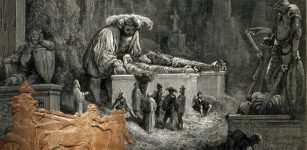 Cities Of Bashan Were Built By Ancient Giants – Archaeological Evidence Exists But Is Ignored
Biblical Mysteries | Nov 25, 2020
Cities Of Bashan Were Built By Ancient Giants – Archaeological Evidence Exists But Is Ignored
Biblical Mysteries | Nov 25, 2020 -
 Hephaestus (Hephaistos) – God Of Fire And Master Craftsman Constructed Talos, First Greek Robot And Divine Weapons Of The Gods
Featured Stories | Jul 7, 2018
Hephaestus (Hephaistos) – God Of Fire And Master Craftsman Constructed Talos, First Greek Robot And Divine Weapons Of The Gods
Featured Stories | Jul 7, 2018 -
 Capoeira: Ancient Martial Art Disguised As A Dance Became A Symbol Of Resistance To Oppression
Ancient History Facts | Jun 8, 2018
Capoeira: Ancient Martial Art Disguised As A Dance Became A Symbol Of Resistance To Oppression
Ancient History Facts | Jun 8, 2018 -
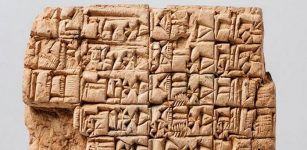 New AI Technique Will Help To Decode Long Lost Languages Of Ancient World
News | Oct 21, 2020
New AI Technique Will Help To Decode Long Lost Languages Of Ancient World
News | Oct 21, 2020 -
![Photo taken on Dec 20, 2015 shows hoof-shaped gold ware unearthed from the main coffin in the Haihunhou (Marquis of Haihun) cemetery, East China's Jiangxi province. [Photo/Xinhua]](https://www.ancientpages.com/wp-content/uploads/2015/12/MarquisofHaihuntomb1-307x150.jpg) Does A 2,000-Year-Old Tomb Belong To Marquis of Haihun? – Search For His Seal Continues
Archaeology | Dec 25, 2015
Does A 2,000-Year-Old Tomb Belong To Marquis of Haihun? – Search For His Seal Continues
Archaeology | Dec 25, 2015 -
 Controversial Artifacts No One Wants To Examine Thoroughly: Is There Something We Are Afraid Of Discovering?
Ancient Technology | May 22, 2019
Controversial Artifacts No One Wants To Examine Thoroughly: Is There Something We Are Afraid Of Discovering?
Ancient Technology | May 22, 2019 -
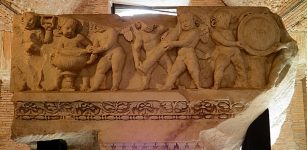 On This Day In History: Julius Caesar Dedicated Temple To Venus Genetrix – On Sep 26, 46 BC
News | Sep 26, 2016
On This Day In History: Julius Caesar Dedicated Temple To Venus Genetrix – On Sep 26, 46 BC
News | Sep 26, 2016 -
 Illapa: Powerful Master Of Clouds, Rain And Hail – Worshipped By Inca People
Featured Stories | Jul 7, 2016
Illapa: Powerful Master Of Clouds, Rain And Hail – Worshipped By Inca People
Featured Stories | Jul 7, 2016 -
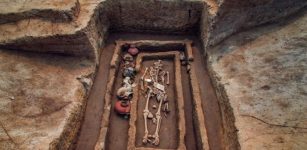 ‘Giants’ Discovered In Ancient Grave In China
Archaeology | Jul 6, 2017
‘Giants’ Discovered In Ancient Grave In China
Archaeology | Jul 6, 2017 -
 LIDAR Discovery Of Valley Of Lost Cities In The Amazon
Featured Stories | Aug 16, 2024
LIDAR Discovery Of Valley Of Lost Cities In The Amazon
Featured Stories | Aug 16, 2024 -
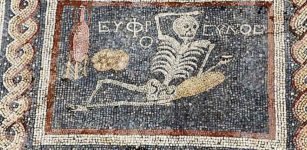 ‘Skeleton Mosaic’ – 2,400-Year-Old Scenes Depicted On Glass Artwork Found In Turkey
Archaeology | Apr 23, 2016
‘Skeleton Mosaic’ – 2,400-Year-Old Scenes Depicted On Glass Artwork Found In Turkey
Archaeology | Apr 23, 2016 -
 Ancient Mystery Of The Strange, Small Underground Being Who Secretly Emptied Casks
Featured Stories | Dec 8, 2024
Ancient Mystery Of The Strange, Small Underground Being Who Secretly Emptied Casks
Featured Stories | Dec 8, 2024 -
 Ancient City Of Adab That Flourished In North Sumer
Civilizations | Jul 19, 2017
Ancient City Of Adab That Flourished In North Sumer
Civilizations | Jul 19, 2017 -
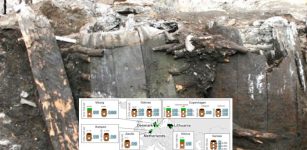 DNA In Viking Poop Sheds New Light On 55,000-Year-Old Relationship Between Gut Companions
Archaeology | Sep 5, 2022
DNA In Viking Poop Sheds New Light On 55,000-Year-Old Relationship Between Gut Companions
Archaeology | Sep 5, 2022 -
 On This Day In History: ‘Diamond Sutra’ The Oldest Dated, Printed Book Is Published – On May 11, 868
News | May 11, 2016
On This Day In History: ‘Diamond Sutra’ The Oldest Dated, Printed Book Is Published – On May 11, 868
News | May 11, 2016



